Many churches today are posting their Pastor’s sermons online. How do they do it? Is that something your church could benefit from? Is Church Podcasting right for your church? If you are like many churches out there today, you are either looking for a better way to get your message to your hearers or are completely clueless on how to do it. We’re going to show you the easiest ways to record your messages and prepare them for distribution so those in your church and beyond can listen to them whenever and wherever they want to. This is the strength of a Podcast. So if you’re away from your home church and missed the message, Podcasting gives you the ability to listen to it at your convenience. Thousands of sermons and bible studies are posted weekly and have quickly become the modern version of anytime radio in the church realm. In fact, that is how the name came to be (iPod + broadcast + Internet). When Apple released the iPod in the early 2000’s, it changed the way we listened to music and programs and made it possible to carry an entire library of your favorite media in your pocket. With Podcasts, all of your sermon messages can also be archived this way. Let’s jump into Church Podcasting 101.
Church Podcasting 101
Although the iPod made the media very portable and accessible for the listener, the technology had not yet arrived to produce Podcasts as easily. You still needed the hardware to record the message and determine the best delivery method. This quickly became the role of the Sound Tech who was usually called in to figure this out. In the past, churches would simply record the sermon directly to a CD recorder by way of the mixing console in the church either through a copy of the Main or Matrix outputs, or an aux bus. You would then take the CD master and duplicate multiple CDs for your congregation if you had a CD duplicator. This is a very expensive and time-consuming process. At the very least, add a stereo microphone or a pair of condenser microphones to the recording to be able to hear the room and the congregation. It brings life to the message and places you in the sanctuary with the rest of us. You’ll hear the responses and the reactions and the natural ambiance of the sanctuary. This will prevent the recording from sounding like it’s in a closet.
To be able to listen to it on a device like an iPod, you would have to rip the CD and convert the recordings into mp3 files by way of iTunes, Windows Media Player or other assorted programs, the same way you would with your music CDs.
Another way to capture your sermons would be to take the outputs from your mixer directly into your computer’s line/mic input, either MAC or a PC, and record directly to a DAW (recording software). Your MAC already has a great program (DAW) for recording called Garage Band that comes pre-installed. If you’re using a PC you can download Audacity for free. Another great DAW that you can get for free is Studio One Prime from Presonus. If you like the way it works you can purchase the full version for access to all of the features.
Once you have the recording software loaded on your computer, you may choose to simply plug a USB microphone directly into your computer like this one, Audio-Technica 2020USB+ to record your messages, bypassing the mixer altogether.

Although recording directly into your computer’s input can work, a higher quality recording would result by way of a computer interface. You would simply take the outputs from your mixer and connect it to the interface and the interface would connect to your computer by way of USB (the most common), Firewire (not as popular), or Thunderbolt (on most current Macs) depending on the computer. Computer interfaces typically come with more fully featured recording programs than freeware.
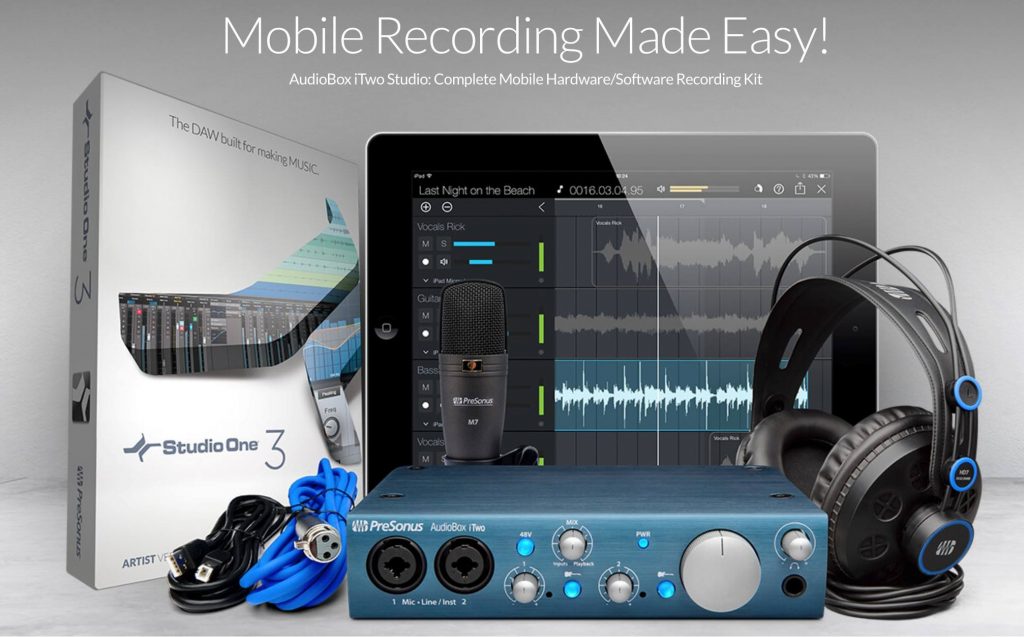
What’s the advantage of recording directly to a computer?
Recording directly to a computer allows you to edit the sermon.
- Remove long pauses to shorten the overall time.
- Make level changes of passages that were too loud or too soft.
- Eliminate distorted or noisy sections.
- Equalize or make tonal changes to increase intelligibility and articulation.
- Add intros and outros, narration, background music and to polish the presentation before anybody hears it.
Nobody wants to hear the pastor’s anguish as he trips over a microphone cable, hitting his noggin on the podium. You probably want to remove that portion of the message. Right?
I don’t have the right equipment.
This is all great! But what if you don’t have any of this stuff or you just want to record a message from your office, record a bible study, a devotion, or the Men’s Breakfast at the local diner? What can you use? You may still want to call your Sound Tech, but if he’s not available, here are some other devices to consider.
Smartphones
Do you own a smartphone? Your smartphone has a computer inside that has more processing power than the Apollo spacecraft had. It’s a phone, an iPod (mp3 player), has a hi-res camera with a touch screen and has access to apps that can do almost anything you can imagine, except make your coffee (Is there an app for that yet?). They even have recording programs that rival those living on computers. You can actually produce an excellent presentation just with your iPhone/iPad/Android.
So what are you saying, you don’t need all the hardware and software to produce a podcast? You got it!! However, better equipment may provide higher quality broadcasts, in my opinion. There are many podcasts online that have been produced on a Smartphone or iPad. Some of the apps for recording to these devices feature multitrack recording, editing, effects and all the stuff to get your broadcast ready for your audience. Incredible!
The microphone built into your smartphone is ok, but to get better quality from your iOS device you may want to up the ante and try the TASCAM iM2. This gives your iPhone/iPad a much higher quality recording. The recording software is free and it even uploads directly to Soundcloud where many churches and bands distribute their podcasts from.
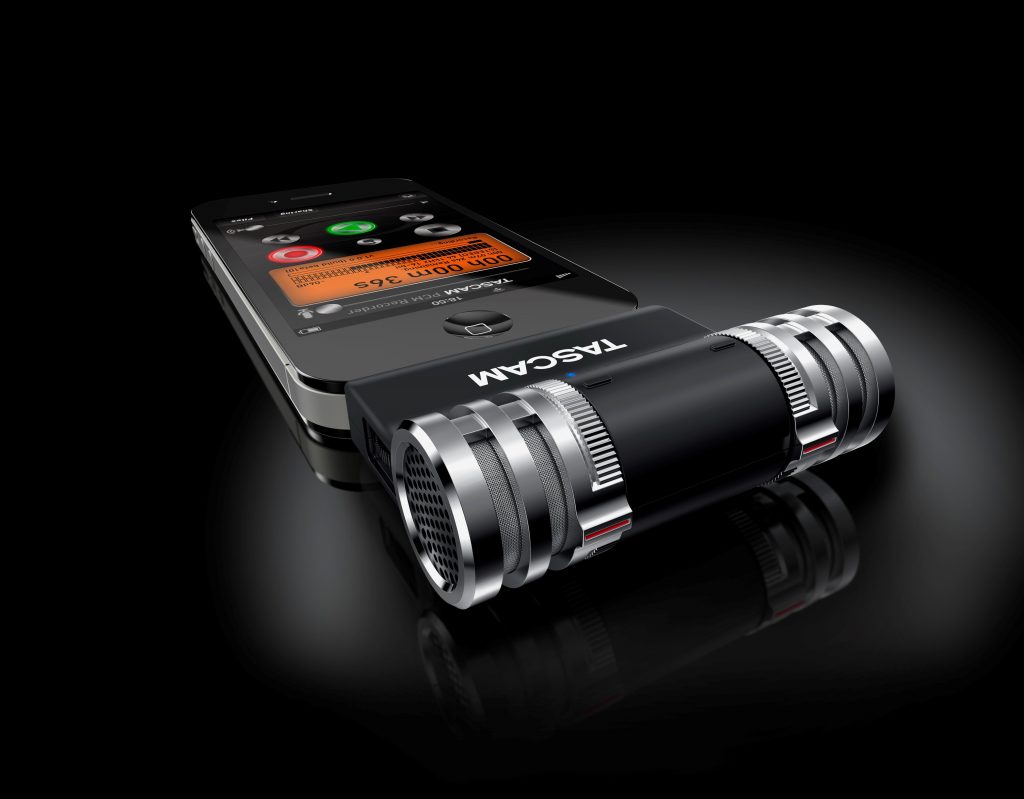
Microphones
Don’t have an iPhone? Can you grab a microphone? Here is a simple device that saves time and effort. The TASCAM DR-10x connects to any dynamic microphone or battery-powered condenser microphone.
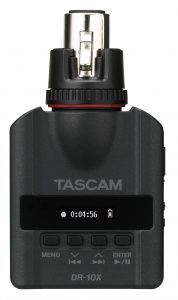
It records to microSD cards or you can offload the recording through a microUSB connection to your computer for editing. (You will still need a computer to edit and upload to the web).
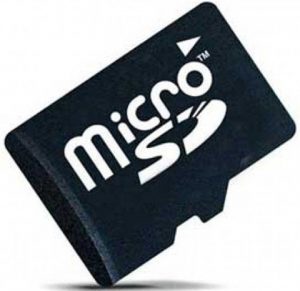
If you are a small church and looking for a new mixer, Presonus just announced the release of a brand new, innovative product called the AR Hybrid Mixers that combines everything you need to satisfy your live sound mixing for the church and all of your recording requirements, multitrack through USB to a MAC/PC and a built-in SD recorder for a live stereo mix.
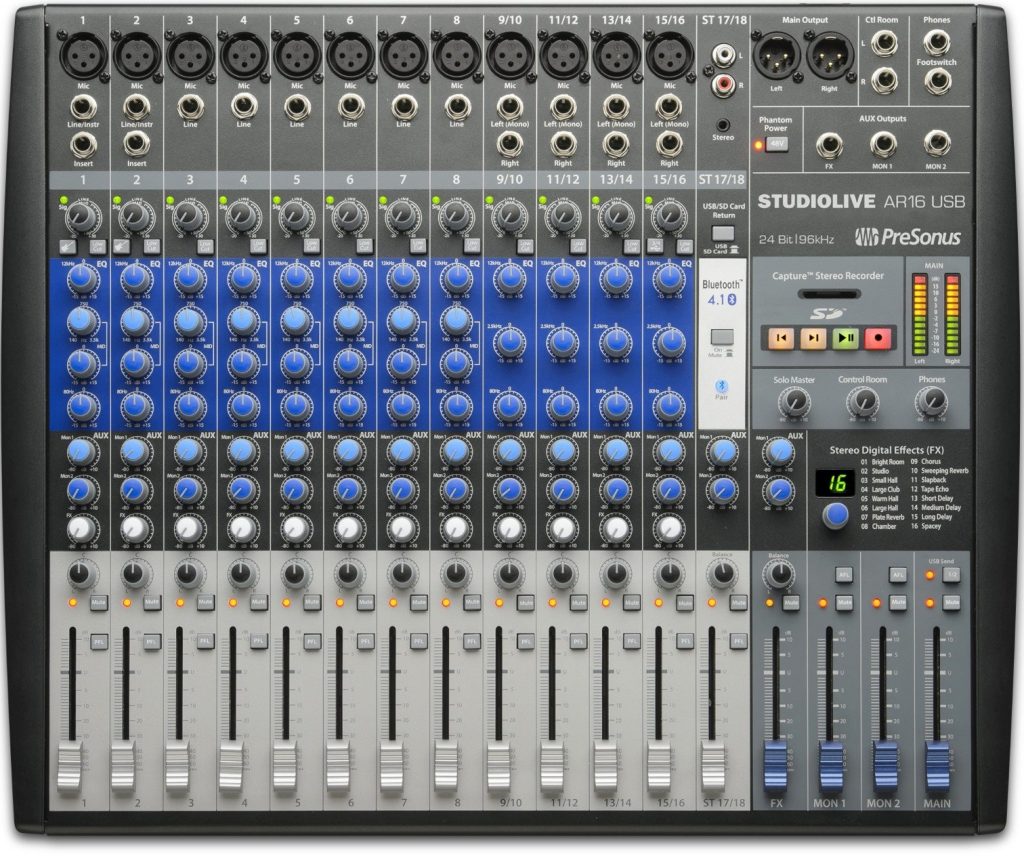
Delivery Methods
Once the recording is finished and polished, you’ll need to deliver it. There are many options here as well.
If you have enough bandwidth on your church’s website, you may be able to post it there. A lot depends on your host server, storage requirements, how many people will actually listen to it at once, etc. If you have savvy IT folks in your church, that is a huge blessing and can prevent nervous breakdowns. For me, I would employ one of the following services, which are free for the basic usage.
Here are two other great sites for guiding you to your church podcasting future:
The Definitive Guide to Starting a Podcast for your Church
Sermon Podcasting Tutorial for Small Churches (and it’s FREE!)
All of these sites will give you step-by-step instructions in the creation and the distribution of your sermons and messages.
If you have any questions, please let me know so that I can help you to find the right solution. I hope this has been a helpful resource. I can’t wait to hear your first church podcast. God bless.
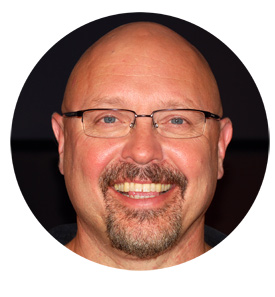
Doug Gould is a veteran of the Pro Audio and Music Technology Industry for almost 30 years serving in management roles at Shure, Tascam, and E-Mu Systems and has been a worship leader, musician and tech at various churches for almost as long. He is CEO and Founder of Worship MD (Market Development) a consulting firm that helps professional audio and music technology manufacturers build relationships with the church through education.

